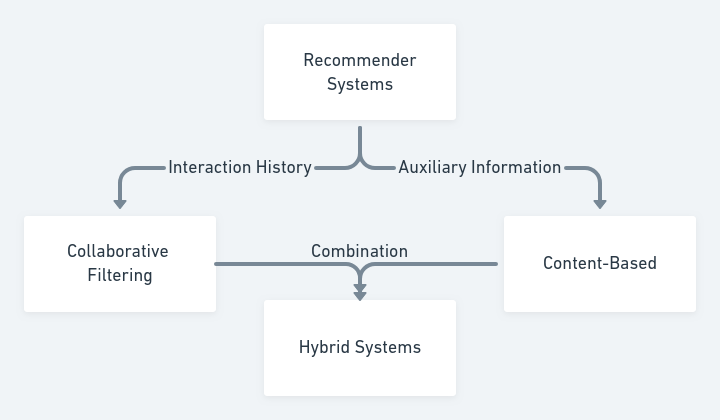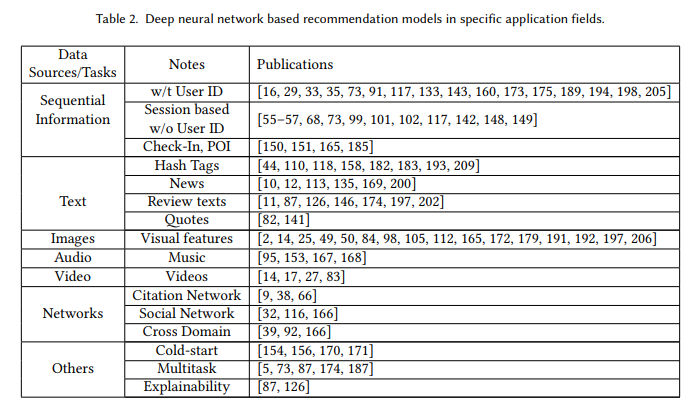Website That Breaks Down Scholary Peer Reviewed Papers
Breaking Downward Review Articles
Use Review Articles to Ease Your Transition into New Areas of Inquiry

Getting started in a new area of research can seem like such a daunting task. Especially when the field has seen exponential growth in the number of papers published every year. This rapid growth tin can arrive extremely difficult to keep up with current inquiry practices. Higher turnover ways there are fewer well-regarded standards as new work focuses on coming up with the next best idea rather than iterating on current methods. It can feel like a never-ending maze if you start indiscriminately reading paper after paper referenced in a widely cited paper.
And then does this hateful we are doomed to fail equally before long as we get-go trying to keep up? No, not at all and especially not if you have a plan.
Review or survey articles are a bully fashion to become oriented with a new field. They include historical information about the original bug in the field, along with past research efforts to try and solve them. Current methods are presented in a manner to compare them with other methods in employ. Having well-identified problem areas can help you figure out what you should focus your efforts on based on your situation or interests. Moreover, the all-time part of review articles is that they deed as a well-curated list of references that you can use to acquire more than about the specifics of the method. Now I want you to walk you through how I interruption down review articles for both my Ph.D. research and my interests.
How I Get Through A Review Article
I recently wanted to know more about how current recommender systems integrate deep learning. In case you don't know, recommender systems use past information well-nigh users and items to predict or recommend future user interactions with new items. For example, in a motion-picture show recommender, the movies would be the items, and individual people might be the users. Interactions for this trouble vary depending on the format and your access to different kinds of data. It could exist a rating system (1–5), it could exist a 👍 or 👎, or possibly it's just whether or not the user has watched the motion-picture show before.
Finding Review Articles
Arxiv and Google Scholar are great places to wait for review papers. Google Scholar tin exist tied to a academy business relationship and then that whatsoever commodity you might take access to on a campus network, are bachelor to you lot off-campus. Here, however, I but use Arxiv since any newspaper in that location is free for anyone reading this.
Pro tip: if you observe an excellent scientific newspaper that you can't get access to, reach out to the authors through electronic mail, and they will nearly probable send you a re-create.
After searching Arxiv, I decided to choose the paper, "Deep Learning Based Recommender System: A Survey and New Perspectives." In that location were a couple of reasons that I ended up choosing this article.
- It is a recent paper. With the latest version released in July 2019, information technology should contain about of the recent advancements in the field.
- The review is published in ACM. Note, but considering a paper is published does non mean that it is good. In this case, the peer-review procedure should assist ensure that no meaning contributions are missing.
- The layout of the paper. The authors broke upward the piece of work into articulate sections making it easier to parse and empathise how all of the reviewed articles fit in the larger picture.
Breaking it Down
All right, at present that nosotros accept a review article, we tin start breaking it down slice by piece. I typically endeavor and break the newspaper into dissimilar sections as a style to organize information. This is specially useful when trying to combine the ideas from multiple articles and for having a prissy summary for future reference.
Reason for Writing
Some review manufactures provide their motivation for writing the review article. Their motivation is a great way to determine the scope of the research they hope to cover too as detect out about other articles that might exist of involvement to yous.
In the final few years, a number of surveys in traditional recommender systems have been presented … However, at that place is a lack of all-encompassing review on deep learning based recommender system. To the extent of our knowledge, only two related short surveys [7, 97] are formally published … Given the ascension popularity and potential of deep learning applied in recommender system, a systematic survey will be of loftier scientific and practical values. We analyzed these works from different perspectives and presented some new insights toward this expanse. To this stop, over 100 studies were shortlisted and classified in this survey [emphasis mine]
With but this 1 brusque extract, we know that the authors take written this paper to be an all-encompassing systematic survey of over 100 manufactures on the use of deep learning in recommender systems. Besides, information technology aims to provide a dissimilar perspective than the 2 previous review papers in the field.
Definition
Information technology is always adept to check and see if the authors give a detailed clarification of the topic that they cover in the review. Explicit definitions can help to articulate up any possible misunderstandings that are a result of non-standard terminology in the field.
Recommender systems estimate users' preference on items and recommend items that users might like to them proactively [i, 121]. Recommendation models are normally classified into three categories [1, 69]: collaborative filtering, content based and hybrid recommender system.
Now nosotros can categorize each recommender system reviewed in the paper into one of 3 unlike categories. They then go on to define each of the categories.
Collaborative filtering makes recommendations by learning from user-particular historical interactions, either explicit (east.g. user's previous ratings) or implicit feedback (e.g. browsing history). Content-based recommendation is based primarily on comparisons beyond items' and users' auxiliary information. A various range of auxiliary data such as texts, images and videos tin be taken into account. Hybrid model refers to recommender system that integrates two or more types of recommendation strategies [8, 69].

So, a recommender system that uses past information about how users interact with the items is collaborative filtering. Systems that utilize information about the users or items to decide the similarity of different items or users and then bases recommendations off that similarity are content-based recommenders. Lastly, if the recommender combines unlike methods, information technology is a hybrid system.
Applications and Data
Determining the kinds of problems that the reviewed methods aim to answer is essential for understanding both the current and future research directions. With recommender systems, we want to know the purpose of electric current systems and the kind of information needed for each system.
In manufacture, recommender systems are critical tools to enhance user feel and promote sales/services for many online websites and mobile applications [20, 27, 30, 43, 113]. For example, 80 percentage of movies watched on Netflix came from recommendations [43], threescore percent of video clicks came from home folio recommendation in YouTube [30] … Covington et al. [27] presented a deep neural network based recommendation algorithm for video recommendation on YouTube. Cheng et al. [twenty] proposed an App recommender system for Google Play with a broad & deep model. Shumpei et al. [113] presented a RNN based news recommender system for Yahoo News.
For each of these applications, we can envision there are different sources and formats of the information that is needed. Thankfully the authors include a table that breaks downwards the reviewed piece of work into categories for each of the sources. Now, instead of having to look through all of the 100 reviewed papers to run into if they use video as an input source, we only have 4 articles to read.

Hereafter Research and Open Issues
In the final section of the paper, the authors discuss open bug in the field and paths for future research. If you are someone who is but getting into the field, this can be a great place to get ideas virtually hereafter projects and the management of your piece of work.
- Joint Learning from Users and Items
- Explainability
- Going Deeper
- Auto Reasoning
- Cantankerous-Domain
- Multi-Task Learning
- Scalability
- Better, More Unified, and Harder Evaluations
Any of these would be a great place to start working on a new project after y'all feel comfy.
Putting It All Together
After going through the paper, nosotros have a better agreement of the what, why, and where of recommender systems. Sadly at this point, we even so aren't anywhere shut to being experts in the field. Nonetheless, nosotros can showtime to see how the research in the field is categorized and what papers we can read to get more info.
I hope this has been a useful exercise to run across how review papers tin can be broken down to assistance go a meliorate understanding of new areas of research. While this is certainly not the only way to review papers, these are some of the techniques I take found helpful for me.
Go out a comment below if yous have questions or you want to share some of the techniques that you lot utilize for reviewing papers.
Source: https://towardsdatascience.com/breaking-down-review-articles-6a85a897c3fb
0 Response to "Website That Breaks Down Scholary Peer Reviewed Papers"
Post a Comment